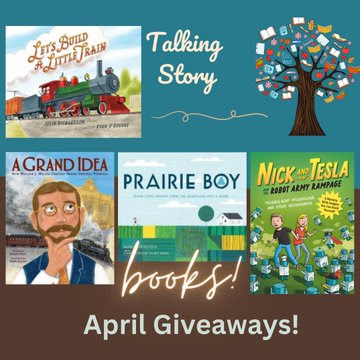Last week I reviewed Claudia Friddell's picture book biography, Saving Lady Liberty: Joseph Pulitzer's Fight for the Statue of Liberty. I promised you an author interview and not only are you going to receive one post revealing Claudia's writing and researching process--but two! I hope you enjoy learning about Claudia's passion to share Pulitzer's fight and how she communicates that passion to her readers--both young and old.
INSPIRATION
CAROL: What was your inspiration for Saving Lady Liberty?
CLAUDIA: When I visited Liberty Island with friends six years ago, I was surprised to see Joseph Pulitzer’s statue in the sculpture garden that honors the five founders of the Statue of Liberty. When I went home and started to dig for treasure—that’s code for research! — I learned that if not for Joseph Pulitzer’s first crowd funding effort to raise money for the pedestal, Lady Liberty would not be standing in New York’s harbor. I felt like this was an important, patriotic American story that kids should know. Adults should know it, too!
 |
Claudia (on the far right) at the Statue of Liberty in 2015
with a fellow teacher
and a former student's family.
. |
CAROL: Can you speak about your writing process? I would also love to hear about the different versions you created and how your editor, Carolyn Yoder, helped you pull them together.
WRITING PROCESS
CLAUDIA: My writing process can vary depending on the subject, but I do have a few constants.
The journey of writing a book can take years, so for me I need to answer yes to the following questions before heading out on that long and winding road:
· Can this real-life event read like a kid-friendly story?
· Is there something familiar and historically significant (the Statue of Liberty) combined with something virtually unknown, historically significant, and interesting to kids (Pulitzer’s crowd funding campaign to save the Statue of Liberty)?
· Is the story timely and relevant for kids today?
Once I’m all in, I read everything I can about my subject from adult biographies, articles, diaries, and interviews to every children’s book I can find relating to the subject.
I take tons of handwritten notes. I often organize my content and sources in a notecard file box. This is especially helpful when writing nonfiction to keep track of sources and quotes. I am also big on writing outlines— I start broad and add layers of detail.
Finding the voice and my literary style is the hardest part for me. Once I have a plan, I get on the computer and start writing…thousands of drafts! I find it helpful to make dummies with sticky notes for my picture books.
Frequently I try writing my books a few different ways. I initially struggled to find the best way to weave together Pulitzer’s story with Lady Liberty’s journey. I wrote many different versions and finally showed my editor two of my favorite beginnings. She pointed out sections of each version that she liked, and I went back to work. Her invaluable input helped me find my voice and my story.
CAROL: Please expound on the “treasure chest” of documents you found while researching—and the people who helped you. How did you know when your research was done?
CLAUDIA: I know it sounds corny, but I really do consider the research process to be a treasure hunt. Hidden in old documents, letters, newspapers, articles, journals, and diaries there are fascinating nuggets of information that help bring true stories from long ago to life.
While I was reading another book about the Statue of Liberty, I saw a wonderful quote from a child’s donation letter in response to Pulitzer’s plea for pedestal contributions. I headed to the New York Public Library where a few amazingly helpful librarians guided me to some very fuzzy, hard to read 135-year-old microfilm copies of The World newspapers. That’s where I found the wonderful children’s letters that I included in my book.
I have found that with nonfiction projects with extensive back matter information, I’m never really finished with the research until everyone has signed off on the last pass of the book. It’s important to continue to keep up with pertinent information throughout the entire writing and editing journey. For example, in the final copy-editing stages of Saving Lady Liberty, I learned that one of the smaller statues had been moved to another location, so I needed to update that information in the back matter.
As I scrolled through days, weeks, and months of papers, I found the hidden gems I was searching for— children’s letters sprinkled among thousands of names and messages from a broad swath of patriotic Americans. Whenever possible, I like to feature the actual words of my subjects, so it was wonderful to not only find some of Pulitzer’s most passionate editorials about saving Lady Liberty in his newspaper, but it was a special treat to highlight the patriotic letters from American children!
PART II will be about Claudia's research process, the immigration theme, Joseph Pulitzer (with a hint at a book someone else should write!), and relevance to children.
GIVEAWAY
The giveaway list started last week. You can increase your chances to win this book by leaving a comment today and on the next post. Winner will be chosen on July 16. REMEMBER: Please leave your email address if you are new to my blog so I can enter your name. Continental United States addresses only.




































